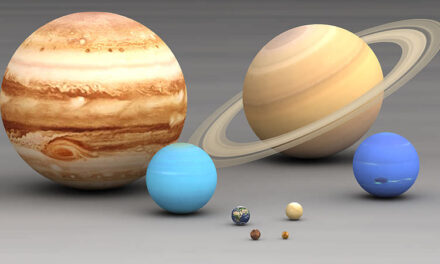Pluto, once considered the ninth planet of our solar system, was reclassified as a “Dwarf Planet” by the International Astronomical Union (IAU) in 2006. This decision sparked controversy and debates among scientists and the general public alike. In this blog post, we will explore the reasons behind this reclassification and delve into the fascinating world of planetary science.
Redefining Planetary Classification
The reclassification of Pluto was a result of the IAU’s decision to redefine what constitutes a planet. According to the new definition, a celestial body must meet three criteria to be considered a planet. We’ll examine these criteria and discuss why Pluto falls short of meeting them.1. Size and Mass
One of the criteria set by the IAU is that a planet must be in hydrostatic equilibrium, meaning it should be spherical in shape due to its own gravity. Pluto, while round, does not have enough mass to clear its orbit of other debris. We’ll explore the significance of this criterion and how it played a role in reclassifying Pluto. Read More…2. Orbit and Neighborhood
Another crucial factor is a planet’s orbit. A planet should orbit the Sun and not another planet, and it should dominate its orbit by clearing any debris or smaller objects. However, Pluto’s orbit intersects with that of Neptune, and it shares its neighborhood with many other trans-Neptunian objects. We’ll discuss the implications of this and its impact on Pluto’s status. Read More…3. Trans-Neptunian Objects
The discovery of numerous other celestial bodies in Pluto’s vicinity, called trans-Neptunian objects, shed light on the complexity of our outer solar system. These objects, including Eris, Haumea, and Makemake, share characteristics with Pluto and are part of a group known as “plutoids.” We’ll delve into the significance of these findings and how they influenced the reclassification of Pluto. Read More…4. The Kuiper Belt
The Kuiper Belt, a vast region beyond Neptune, is home to a multitude of icy bodies, including Pluto. This discovery prompted scientists to reevaluate their understanding of the solar system’s outer reaches. We’ll explore the Kuiper Belt and its role in redefining our understanding of planetary objects. Read More…
5. Scientific Consensus and Public Reaction
The reclassification of Pluto ignited a passionate debate among scientists and captured the public’s attention. We’ll delve into the arguments put forth by both sides of the discussion and highlight the reasons behind the final decision. We’ll also address the emotional attachment many people have towards Pluto and why its reclassification continues to be a topic of interest. Read More…Conclusion
The reclassification of Pluto as a dwarf planet marked a significant turning point in our understanding of the solar system. By examining the criteria set forth by the IAU and considering the discoveries made in the outer reaches of our celestial neighborhood, we can appreciate the scientific process and the evolving nature of knowledge. While Pluto may no longer be considered a planet, it remains an intriguing and captivating object worthy of study and exploration.References
- International Astronomical Union (IAU)
- NASA – The Solar System Exploration: Planets
- Brown, M. E., & Butler, B. J. (2018). The Dwarf Planets. In The New Solar System (5th ed., pp. 213-235). Cambridge University Press.










